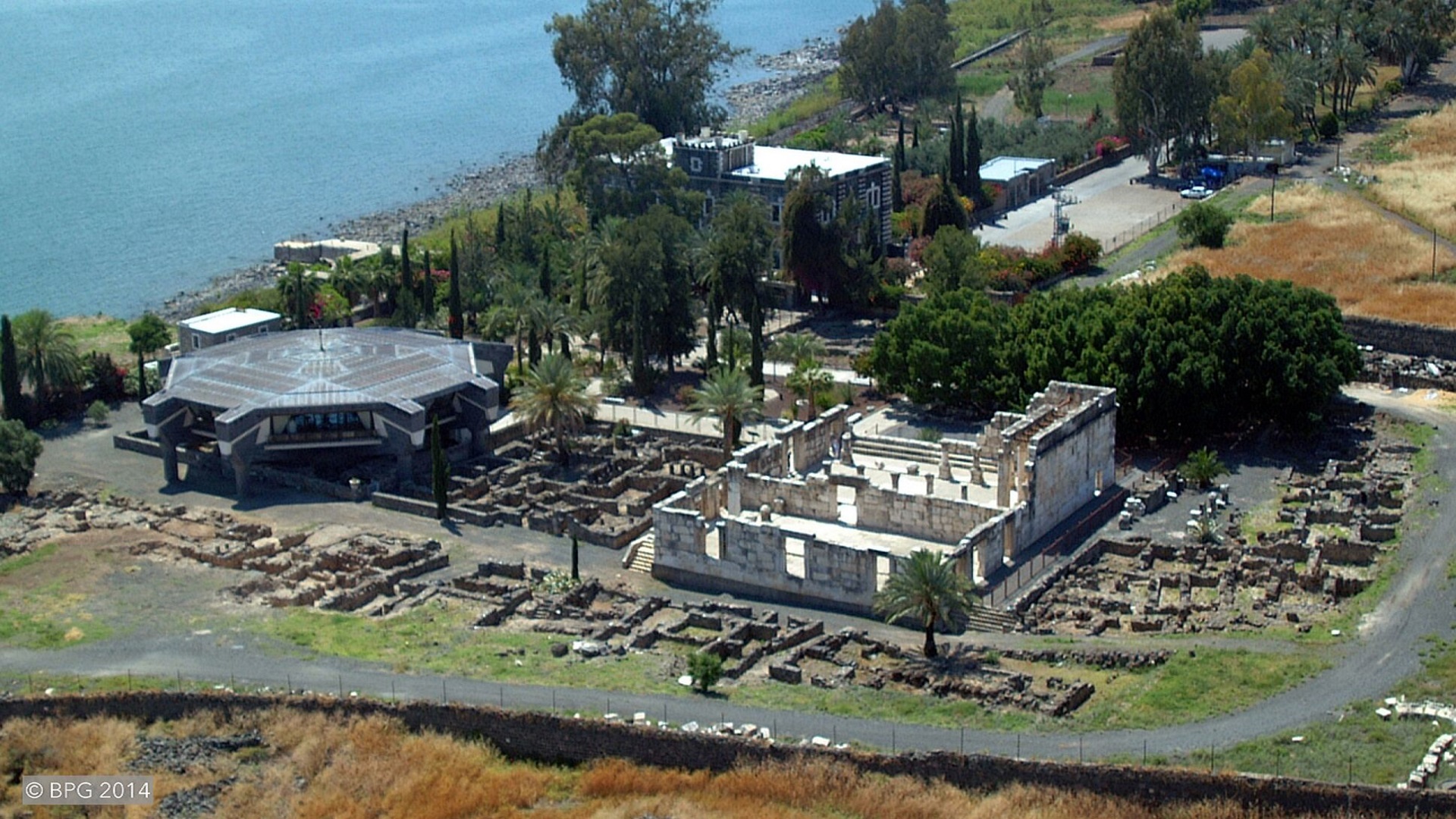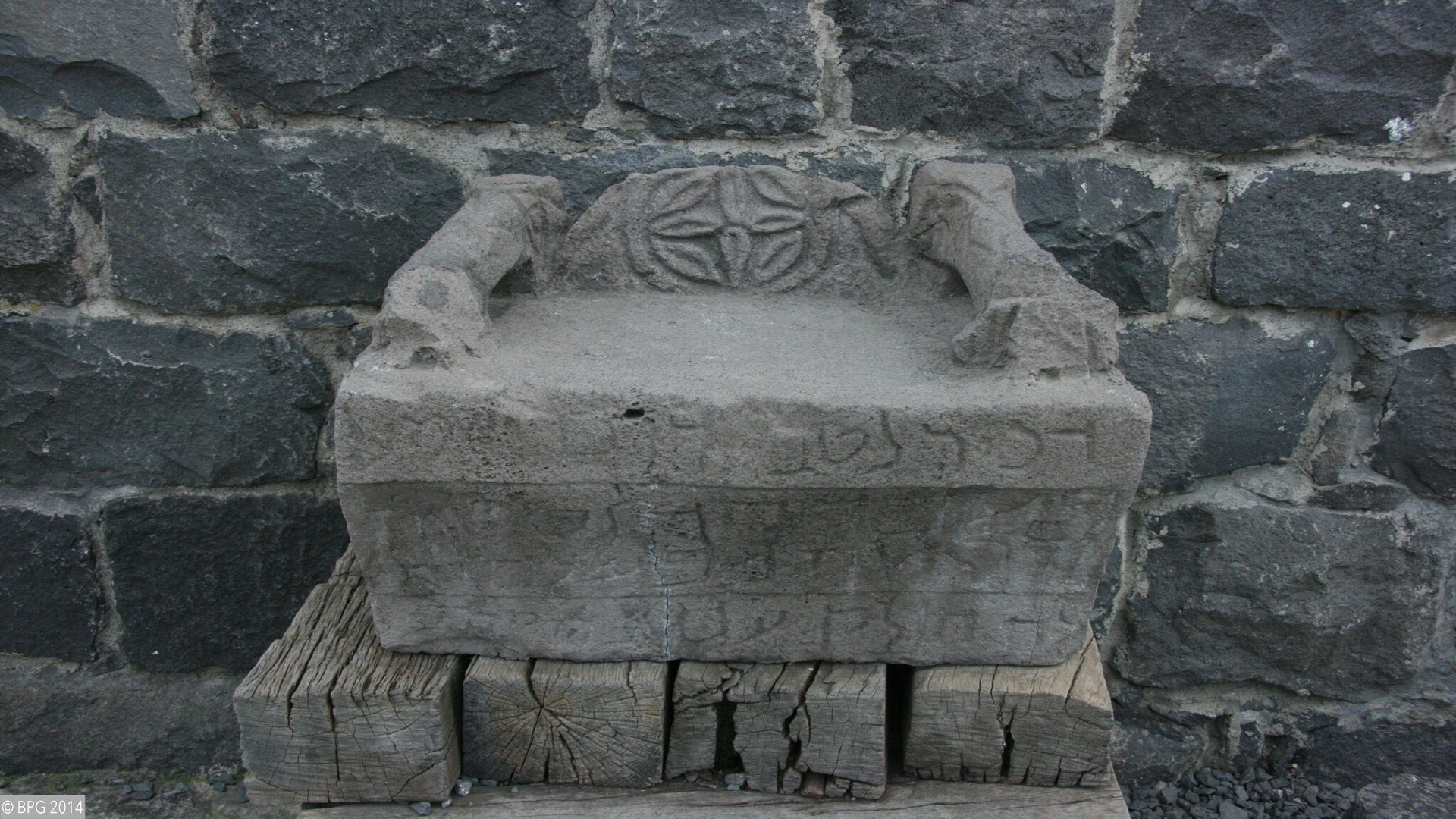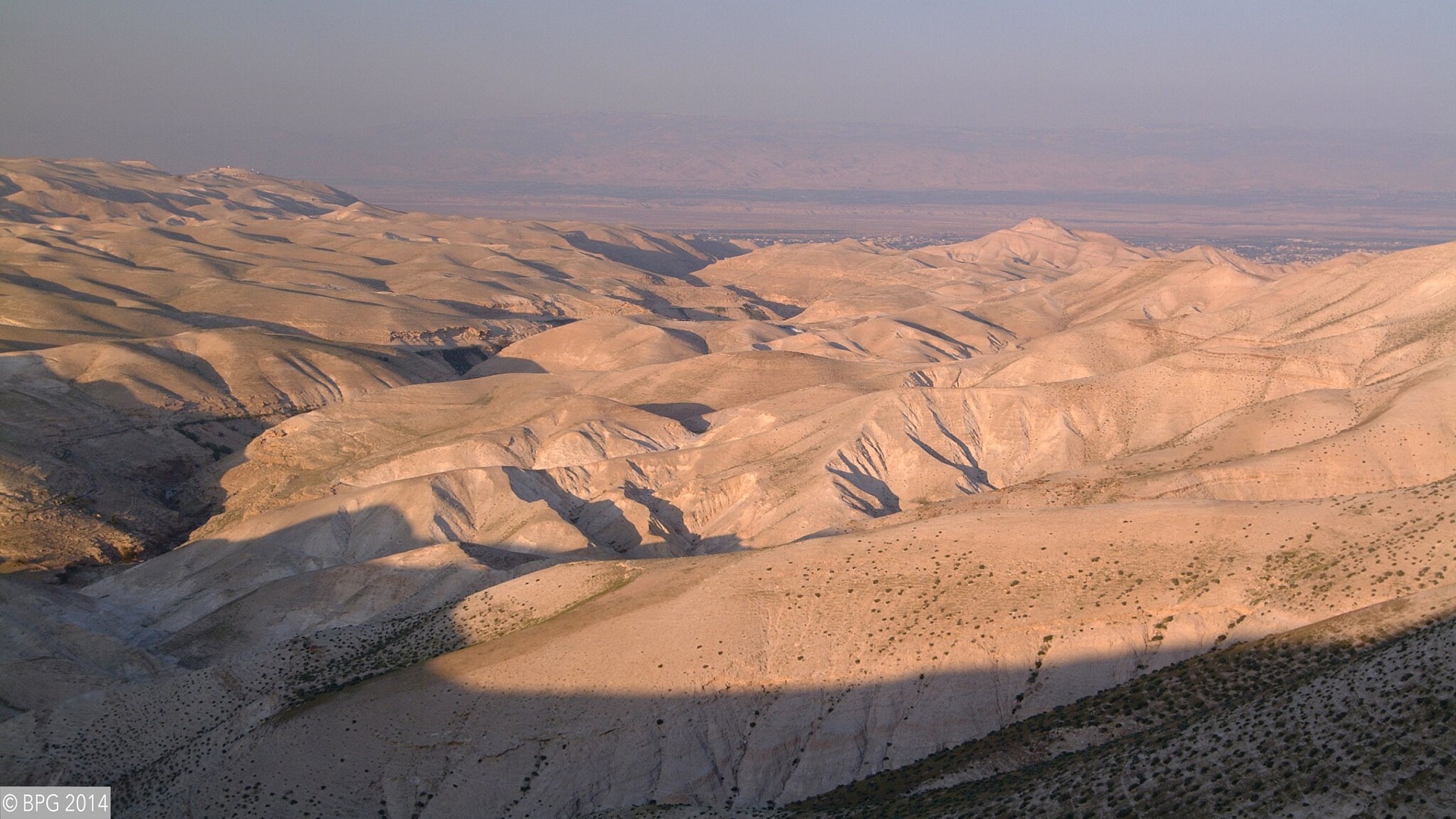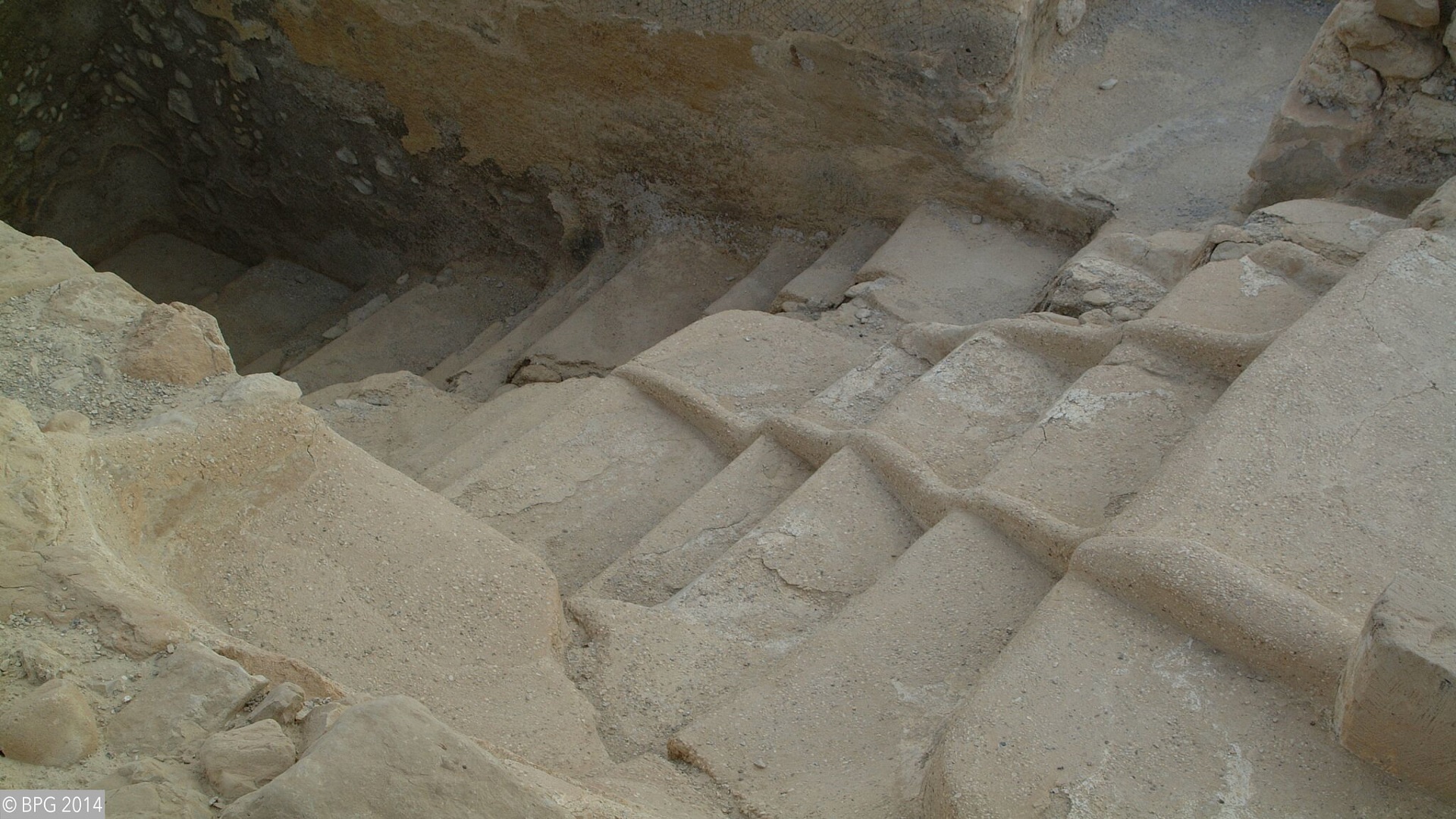New Testament Field Guideნიმუში

Religious Movements: Behind the Text
Let’s get acquainted with the issues and groups that make up “sectarian” Judaism in the 1st century
Sectarian Judaism: The Places

Here's a picture of the Temple that Herod built. The Herodians (Herod’s family and court) and the Sadducees did a lot of business around the Temple. Their livelihood was made secure by the established religious system. Their prosperity was secured by their connections with Rome. They were a kind of aristocracy who collaborated with the ruling power.

This image is a photo of Capernaum, on the coast of the Sea of Galilee. The prominent ruin is the 2nd century synagogue, which was built on top of a 1st century synagogue. Synagogues like these were the local power-bases of the Pharisees, who are believed to have had a more popular following than the Sadducees.

This seat, called Moses’ seat, has been found at a synagogue in a place called Chorizin. It is one of the places that Jesus curses (Matt 11:21; Luke 10:13).

The desert is the place of the monastic Essenes, but also where John the Baptist goes to baptize. Here messianic expectations were blowing in the wind. The Essenes regularly quoted Isaiah 40:3; "Behold one crying in the wilderness, prepare the way for the Lord." They believed the Messiah would come but not as part of the corrupt Temple establishment.

We're in Qumran. The Dead Sea Scrolls were found nearby. In this desert area, it's very difficult to imagine making ritual bathing a high priority. However, it was a major part of life for the Essenes who lived here—evidenced by the ritual pool shown here. They would take off all their clothes, go down one side of the steps, completely immerse, come back up the other side of the steps with a robe on, and then they would be considered ritually clean.
The images in the carousel above portray some of the places that were important for the various sectarian groups in Israel in the first century.
Now you’ll understand how Jesus and his followers were like—and unlike—their contemporaries.
წმიდა წერილი
About this Plan

Have you ever wished for a Bible study that could take you beyond surface-level reading? If so, get ready for our New Testament Field Guide! You'll get to immerse yourself in Scripture (by looking at key terms and ideas), explore what's behind it (by learning historical-cultural background), and also discover its impact by considering its implications, not only for you but for the global church. Let's dive in!
More









